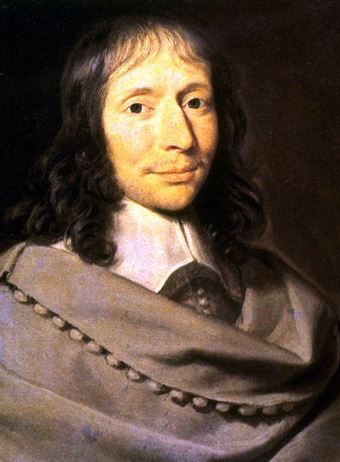CHURCH HISTORY
Church Foundations
Blaise Pascal
By Brandon Markette

Born in France in 1623, Pascal quickly showed his keen scientific mind. By the age of 10 he devised his own experiments and, by 19, invented Pascal's Calculator, a primitive, mechanical computer. In addition to his calculator, Pascal experimented with hydraulics and vacuums. He proved the existence of a vacuum and discovered what is now known as Pascal's Law. Not only was he a physical scientist, but also an inventor and mathematician. In Mathematics, Pascal developed Pascal's Triangle. Other than his calculator, Pascal also invented something most of us are familiar with — the syringe!
Blaise Pascal was one of the foremost mathematicians and scientists of the 17th century. Yet, he also became an ardent defender of the Christian Faith. Pascal's enquiries were not limited to math and physics. He also investigated spiritual matters. In 1646 two men caring for his injured father introduced Pascal to Jansenism.
Jansenism, named for Cornelius Jansen, began as a reform movement within the Catholic Church. Bishop Jansen championed an Augustinian view of sin and grace, which was at odds with the Catholic Church. His work, Augustinius, published posthumously, was condemned by the Pope. This did not, however, stop Pascal's friends and students from continuing his work to reform the church. This movement, committed to Augustine's view of grace, became known as Jansenism.
Through the Jansenists, God brought Blaise Pascal to faith. On 23 November 1654, Blaise Pascal experienced what he described as "a definitive conversion." Pascal carried this life changing event with him, literally. Recording it on a piece of parchment, Blaise sewed the parchment into his coat.
After his conversion, Pascal applied the same mind that invented his calculator to understanding and defending the Christian faith. In 1656 he published 18 letters defending the Jansenist view of grace and attacking both the Jesuits and the Thomists (named for Thomas Aquinas). Not only on the issue of grace, but also upon how one should understand faith and conversion. Pascal was convinced that reason could only take one so far. Faith must come as a gift of God's grace. Science and reason might get one close to faith, but it could not actually bring anyone to faith. Only God can do that.
Some of his most famous writings are contained in his Pensees. Begun as a book on apologetics, Pascal died before he completed the work. His Pensees are his notes and were published posthumously.
In the Pensees Pascal argues for the Christian faith from the human condition. We find Pascal's most famous argument — what is referred to as Pascal's Wager. Because Pascal believed one could neither prove nor disprove God's existence, he presented his wager. In this case, where there is equal change that does or does not exist, the prudent person should wager that God does, in fact exist. The reasoning is quite simple: if one wagers that God exists, and it turns out that He does, then one gains eternity. If it turns out that God does not exist, then one loses nothing. On the other hand, if one wagers that God does not exist and, in fact, God exists, then one loses everything. If one wagers that God does not exist and God does not exist, then one gains nothing. According to this thinking, it is far more prudent to wager that God does exist than to wager he does not.
Unfortunately, Blaise Pascal never finished his work of Christian apologetics. Battling various illnesses throughout his life, he passed on at the age of 39. Though he only lived 39 years on this earth, his impact is almost unparalleled. From physics and math to philosophy and faith, Blaise Pascal changed every subject he touched.
Tags: Biblical-Truth | History-Apologetics | Reviews-Critiques | Theological-Beliefs
comments powered by Disqus
Published 3-6-2014

